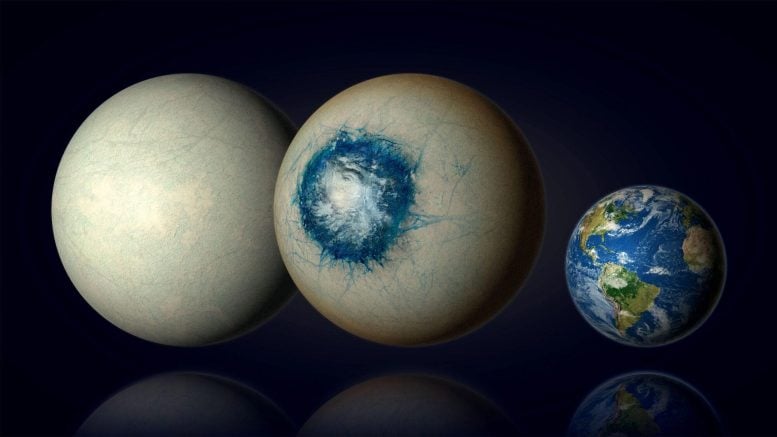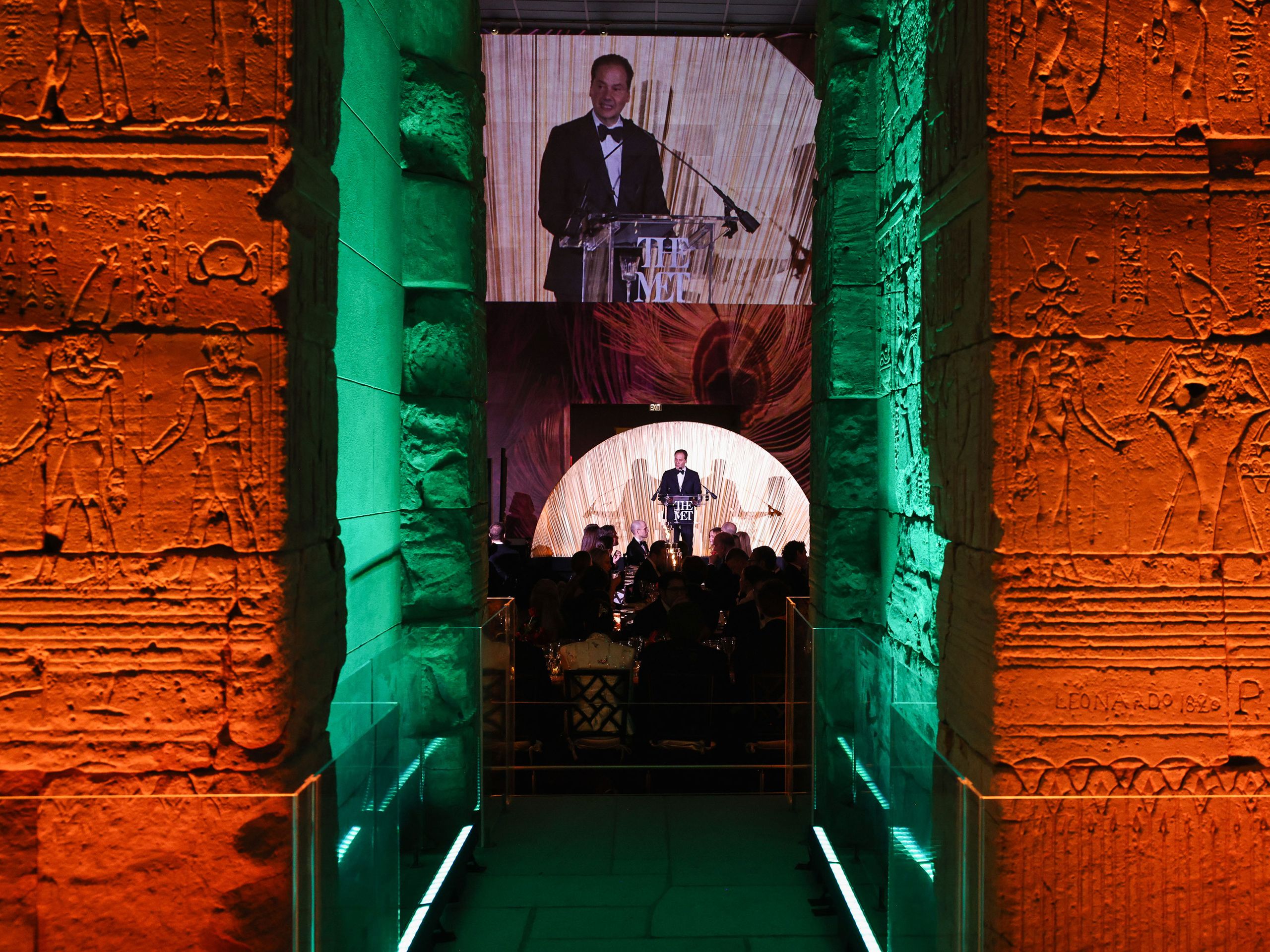Exploring Extraterrestrial Life: Webb Telescope Probes Mysterious Icy World Nearby

Temperate exoplanet LHS 1140 b may be a world completely covered in ice (left) similar to Jupiter’s moon Europa or may be an ice world with a liquid substellar ocean and a cloudy atmosphere (center). LHS 1140 b is 1.7 times the size of our planet Earth (right) and is the most promising habitable zone exoplanet yet found in the search for liquid water beyond the Solar System. Credit: Benoit Gougeon, Université de Montréal
Researchers used data from multiple space telescopes, including the James Webb Space Telescope (JWST), to study the exoplanet LHS 1140 b, located 48 light-years away in the constellation Cetus. This exoplanet, orbiting a red dwarf star, is in the habitable zone and shows signs of potentially having a nitrogen-rich atmosphere and a water-rich composition, which could include a liquid water ocean. This makes LHS 1140 b one of the most promising candidates for future habitability studies.
Scientists have identified a temperate exoplanet as a promising super-Earth ice or water world. Led by Université de Montréal, the research team includes a University of Michigan astronomer.
The findings show that the habitable zone exoplanet, LHS 1140 b, is not likely a mini-Neptune, a small so-called gas giant—large planets composed mostly of gas—with a thick hydrogen-rich atmosphere. The planet, located about 48 light-years away in the constellation Cetus, emerges as one of the most promising habitable zone exoplanet candidates known, potentially harboring an atmosphere and even a liquid water ocean.
Data from the James Webb Space Telescope were collected in December 2023 and added to previous data from other space telescopes Spitzer, Hubble, and TESS to solidify this result, accepted for publication in The Astrophysical Journal Letters this week.
“This is the first time we have ever seen a hint of an atmosphere on a habitable zone rocky or ice-rich exoplanet. Detecting atmospheres on small, rocky world is a major goal from JWST, but these signals are much harder to see than for giant planet atmospheres,” said Ryan MacDonald, NASA Sagan Fellow in the U-M Department of Astronomy who was key in the analysis of LHS 1140 b’s atmosphere. “LHS 1140 b is one of the best small exoplanets in the habitable zone capable of supporting a thick atmosphere, and we might just have found evidence of air on this world.”
Launched in 2021, the James Webb Space Telescope is the next great space science observatory following Hubble, designed to answer outstanding questions about the Universe and to make breakthrough discoveries in all fields of astronomy. Its infrared capabilities allow it to study the atmospheres of distant planets in detail, identifying elements like water vapor, methane, and possible biosignatures. Credit: ESA/ATG medialab
LHS 1140 b, an exoplanet orbiting a low-mass red dwarf star roughly one-fifth the size of the sun, has captivated scientists due to it being one of the closest exoplanets to the solar system that lies within its star’s habitable zone. Exoplanets found in this “Goldilocks Zone” have temperatures that would allow water to exist on them in liquid form, a crucial element for life as we know it on Earth.
One of the critical questions about LHS 1140 b was whether it is a mini-Neptune type exoplanet or a super-Earth—a rocky or water-rich planet larger than Earth.
“Of all currently known temperate exoplanets, LHS 1140 b could well be our best bet to one day indirectly confirm liquid water on the surface of an alien world beyond our solar system,” said Charles Cadieux, lead author of the science paper and doctoral student at Université de Montréal. “This would be a major milestone in the search for potentially habitable exoplanets.”
Ryan MacDonald. Credit: University of Michigan
Analysis of the team’s observations strongly excluded the mini-Neptune scenario, with evidence suggesting the exoplanet LHS 1140 b is a super-Earth that may even have a nitrogen-rich atmosphere like that of Earth’s. However, the team cautions that additional observations with JWST observations will be necessary to confirm the signature of nitrogen gas.
Estimates based on all accumulated data reveal that LHS 1140 b is less dense than expected for a rocky planet with an Earth-like composition, suggesting that 10 to 20% of its mass may be composed of water. This discovery points to LHS 1140 b being a compelling candidate water world, likely resembling a snowball or ice planet with a potential liquid ocean at the sub-stellar point, or the area of the planet’s surface that would always be facing the system’s host star due to the planet’s synchronous rotation (much like the Earth’s moon).




